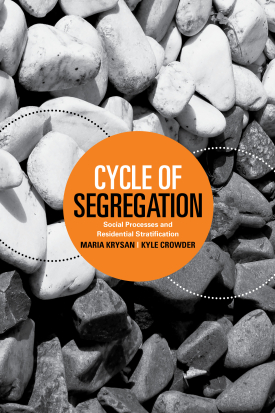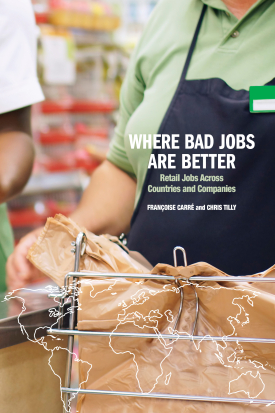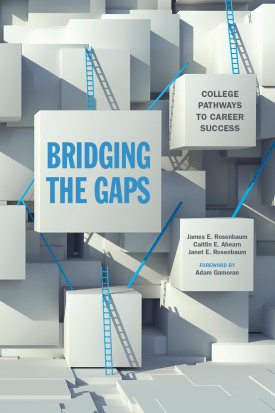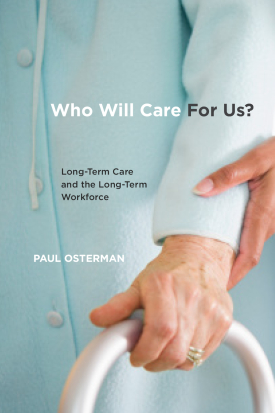
Cycle of Segregation
About This Book
Winner of the 2019 Otis Dudley Duncan Book Award from the Sociology of Population Section of the American Sociological Association
Winner of the 2018 Oliver Cromwell Cox Book Award from the Section on Racial and Ethnic Minorities of the American Sociological Association
Winner of the 2018 Robert E. Park Award for Best Book from the Community and Urban Sociology Section of the American Sociological Association
Honorable Mention for the 2018 Outstanding Contribution to Scholarship Book Award from the Race, Gender, and Class Section of the American Sociological Association
“In The Cycle of Segregation, Maria Krysan and Kyle Crowder offer a major breakthrough in understanding of the roots of residential segregation in U.S. society today. Their social-structural sorting perspective elegantly and convincingly explains how black and Hispanic segregation can persist even as minority incomes rise and discrimination and prejudice in housing markets decline. It is a remarkable achievement.”
—Douglas S. Massey, Henry G. Bryant Professor of Sociology and Public Affairs, Princeton University
“I highly recommend this book. Maria Krysan and Kyle Crowder's social structural sorting perspective provides new theoretical lens for recognizing and understanding the self-reinforcing processes of residential segregation. Their original analysis of the drivers of segregation and thoughtful policy prescriptions for dismantling it make Cycle of Segregation a must-read.”
—William Julius Wilson, Lewis P. and Linda L. Geyser University Professor, Harvard University
“It is rare that a book written on a problem so fundamental to social life—segregation—is able to make a truly unique contribution and to set the stage for a new, more refined research agenda. Cycle of Segregation does so. Maria Krysan and Kyle Crowder have synthesized insights from a wide range of empirical studies, and put them together to develop a theory of how the structure of urban inequality constrains and shapes individuals’ residential choices, giving segregation its own self-perpetuating momentum. This book changed how I think about segregation, and it should be read by anyone who cares about America’s urban neighborhoods.”
—Patrick T. Sharkey, Professor and Chair of Sociology, New York University
The Fair Housing Act of 1968 outlawed housing discrimination by race and provided an important tool for dismantling legal segregation. But almost fifty years later, residential segregation remains virtually unchanged in many metropolitan areas, particularly where large groups of racial and ethnic minorities live. Why does segregation persist at such high rates and what makes it so difficult to combat? In Cycle of Segregation, sociologists Maria Krysan and Kyle Crowder examine how everyday social processes shape residential stratification. Past neighborhood experiences, social networks, and daily activities all affect the mobility patterns of different racial groups in ways that have cemented segregation as a self-perpetuating cycle in the twenty-first century.
Through original analyses of national-level surveys and in-depth interviews with residents of Chicago, Krysan and Crowder find that residential stratification is reinforced through the biases and blind spots that individuals exhibit in their searches for housing. People rely heavily on information from friends, family, and coworkers when choosing where to live. Because these social networks tend to be racially homogenous, people are likely to receive information primarily from members of their own racial group and move to neighborhoods that are also dominated by their group. Similarly, home-seekers who report wanting to stay close to family members can end up in segregated destinations because their relatives live in those neighborhoods. The authors suggest that even absent of family ties, people gravitate toward neighborhoods that are familiar to them through their past experiences, including where they have previously lived and where they work, shop, and spend time. Because historical segregation has shaped so many of these experiences, even these seemingly race-neutral decisions help reinforce the cycle of residential stratification. As a result, segregation has declined much more slowly than many socialscientists have expected.
To overcome this cycle, Krysan and Crowder advocate multilevel policy solutions that pair inclusionary zoning and affordable housing with education and public relations campaigns that emphasize neighborhood diversity and high-opportunity areas. They argue that together, such programs can expand the number of destinations available to low-income residents and help offset the negative images many people hold about certain neighborhoods or help introduce them to places they had never considered. Cycle of Segregation demonstrates why a nuanced understanding of everyday social processes is critical for interrupting entrenched patterns of residential segregation.
MARIA KRYSAN is professor of sociology at the University of Illinois at Chicago.
KYLE CROWDER is Blumstein-Jordon Professor of Sociology at the University of Washington.



